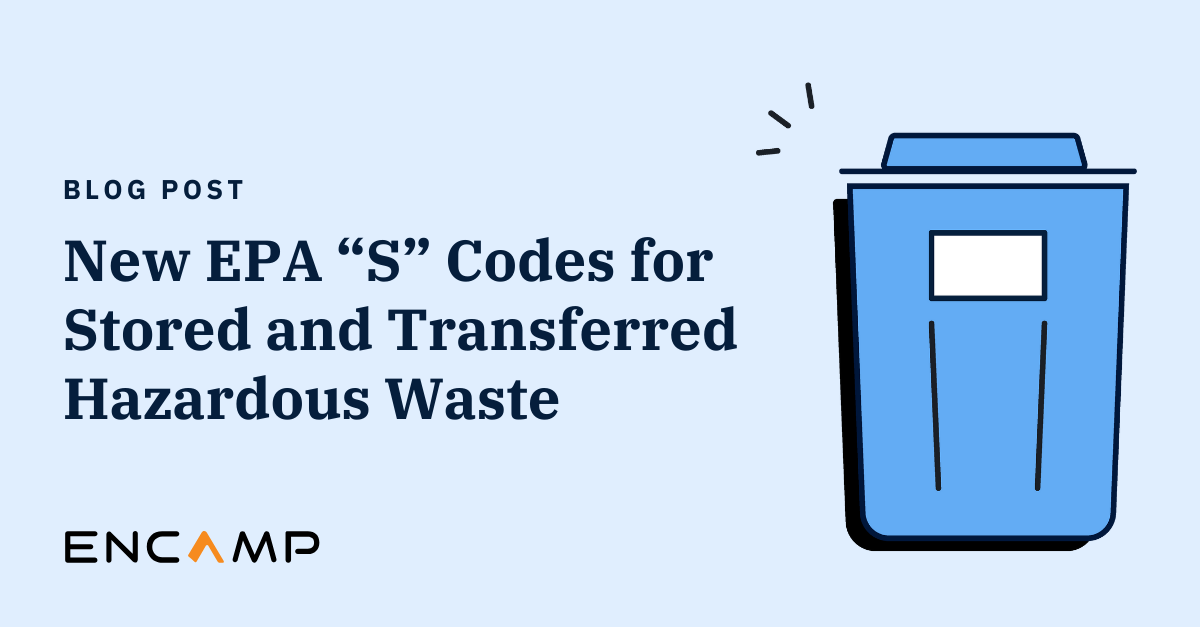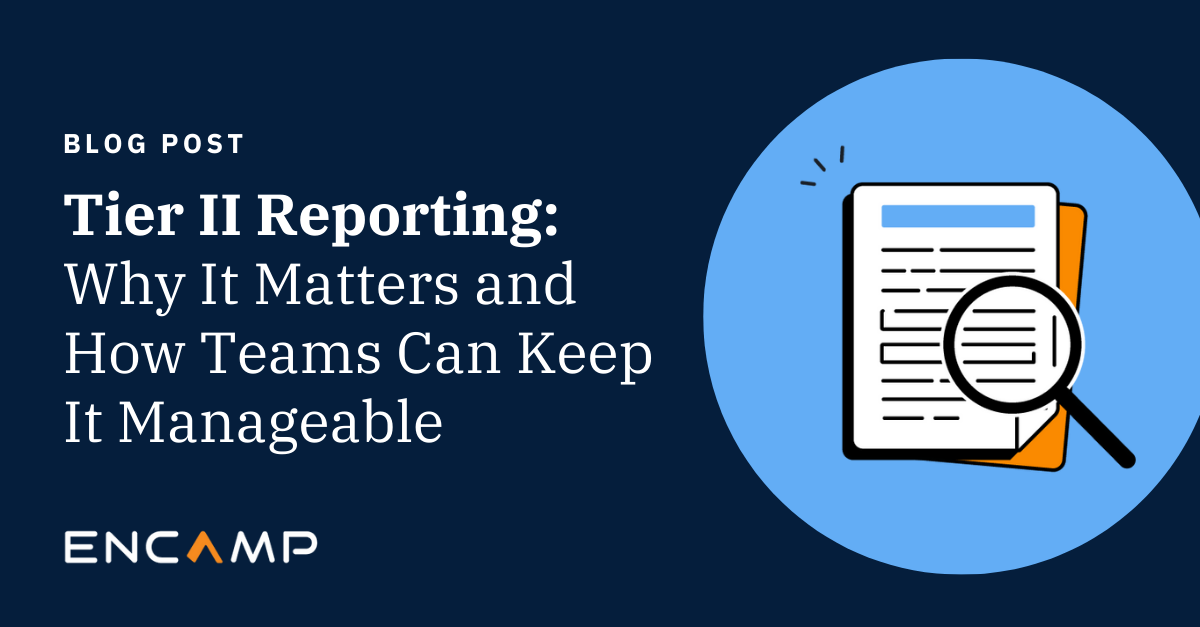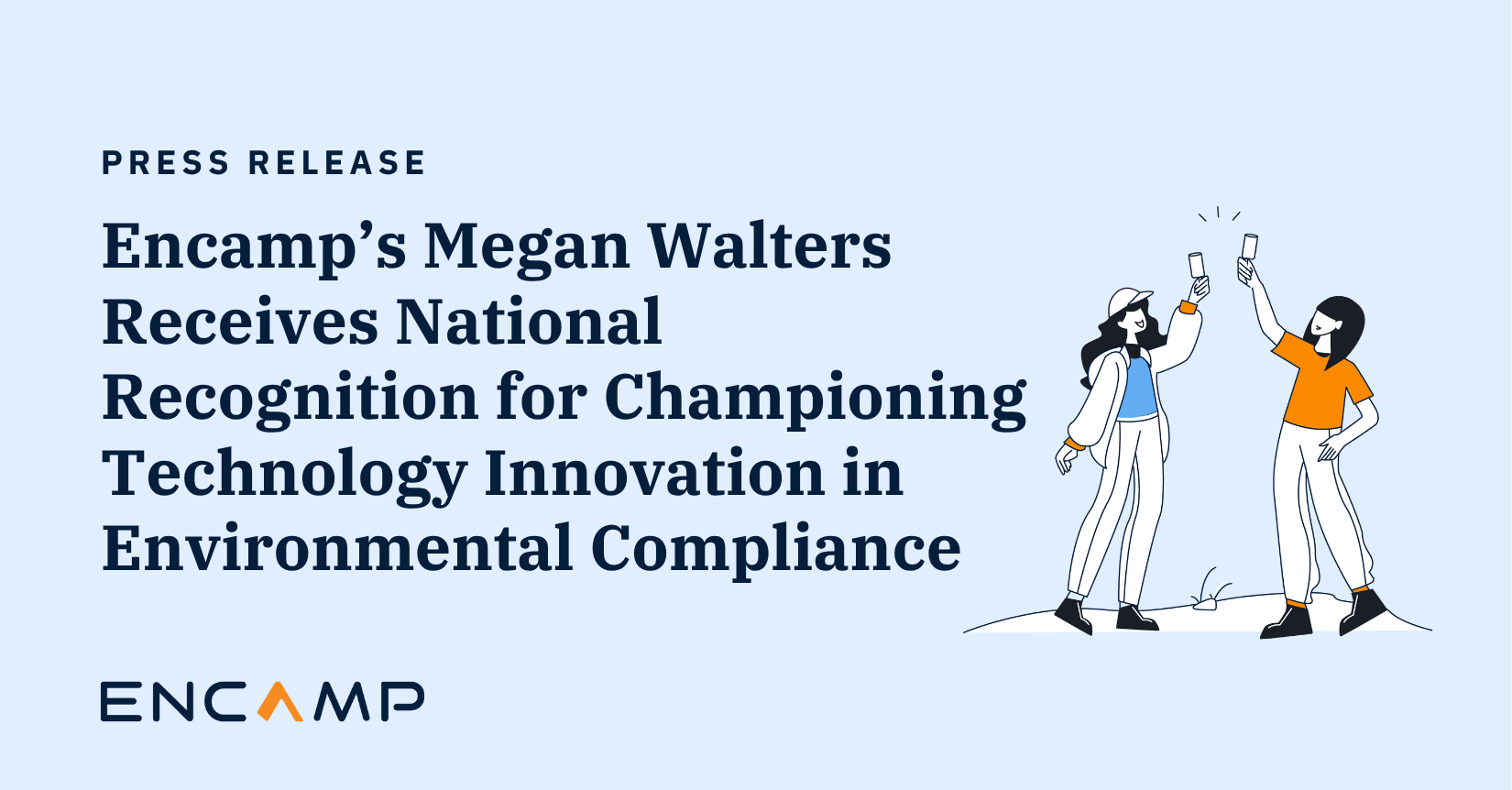Encamp’s new eBook on proactive environmental compliance stems from two truths of the compliance sphere. The first is that non-compliance with regulatory requirements like EPCRA is not an option. And the second is that prepping for Tier II reports should be a year-round function — not just something EHS teams set aside until January or February.
 Download the eBook
Download the eBook
Your Guide to Proactive Environmental Compliance:
Eliminating the risks of non-compliance
What constitutes “proactive”?
For reporting, it means having compliance data compiled and confirmed on January 1. No more scrambles to meet the March 1 due date for Tier II submissions. To that end, being proactive involves five key aspects: Digitization, Visibility, Collaboration, Productivity… and Sustainability.
The sustainability aspect results from aligning compliance and reporting efforts with corporate goals and “going digital.” Such alignment begins by first identifying the business and environmental issues corporate leaders care about most. It then requires determining how EHS operations impact these issues. (Environmental, Social, and Governance (ESG) criteria can come into play here.)
The aim is to manage compliance and reporting in more efficient ways that contribute to sustainability. Proactive environmental compliance lets EHS teams drive such efficiency with digital transformation technologies and practices that support compliance management. Corporately, businesses can then add these efficiency gains alongside other sustainability measures such as decreasing energy and water usage and reducing greenhouse gas emissions.
Following are some of the more vital sustainability-based outcomes that EHS and corporate leaders can appreciate when environmental compliance management has a digital foundation.
Cost reductions
A digital approach helps reduce costs by making EHS operations and reporting systematic. When functions and processes are systematized, they become more efficient, sustainable, and repeatable.
In the proactive environmental compliance model, the following aspects all contribute to efficiency and reduce costs both directly and indirectly. Direct avenues include automation, task management, higher productivity, and so on. Indirect contributors are outcomes such as broader institutional knowledge, avoiding fines and penalties for non-compliance, and lower EHS employee turnover.
The key aspects in detail
Digitize records — especially paper records — to ensure people can access institutional knowledge to minimize non-compliance risks. Obviously, fewer paper records are good for the environment and sustainability. But just as critically, minimizing the risks of non-compliance and avoiding violations is good for companies. They steer clear of exorbitant financial penalties, possible shut-downs of operations, and potentially damaged corporate reputations. They also make their communities safer.
Increase data visibility between Operations and EHS teams and across facilities to streamline environmental compliance task management. In the reporting process, data transparency and task continuity makes it more efficient to QC/QA compliance data and ensure its accuracy. EHS teams are also better able to track reporting statuses and collaborate as a group. This heightens the prospect of compliance filings being submitted accurately and on time. Streamlining tasks and making data more visible additionally lends to standardizing processes and making them repeatable across EHS teams and facilities.
Collaborate enterprise-wide to increase compliance confidence. Collaboration can increase an EHS team’s collective visibility into environmental compliance functions and programs, sites, reporting metrics, and so on. But when collaboration is lacking (or non-existent), the ability to manage processes and complete reporting tasks is diminished. The potential consequence? Data and deadlines can get missed and the risk of non-compliance can go higher — which further diminishes confidence in the compliance process.
Improve EHS workforce productivity, institutional knowledge sharing, and employee empowerment. The concepts of digital transformation were introduced specifically to reduce the “friction” of manual work and encourage sustainability. When records are digitized and processes are automated, data moves across an organization more efficiently. Institutional knowledge and worker productivity then improve almost inherently. Likewise, EHS employees are more empowered, which helps reduce workforce turnover.
An overriding benefit of digital transformation is that it provides a framework in which data, process, and people work together within a sustainable digital infrastructure. This lets EHS teams digitize data and records, and also digitalize processes to streamline data flows and workflows. Digital transformation tools such as cloud computing and automation also spur efficiency, highlighted by the ability to access more information more quickly.
In conjunction with the enterprise, EHS departments can systematize and improve operational processes and tightly align functions and with corporate sustainability goals. When they do, the positive outcomes can be many.
- Create a single source of truth for compliance reporting: Increase data visibility and demonstrate compliance in a clear and straightforward manner
- Digitalize and standardize reporting processes to make them systematic and repeatable: Efficiently circulate institutional knowledge, implement continuous process improvements, and eliminate inefficient data silos and labor intensive manual work
- Electronically submit compliance reports to states that offer electronic reporting: Effectively track and manage state filing fees and reporting costs by facility, and reduce the time spent on chargebacks, budget forecasting, and annual budgeting
Adaptability, scalability, and mergers and acquisitions transactions
EHS operations, teams, key personnel, and the number of facilities and sites can fluctuate constantly. EHS departments must therefore be able to adapt and manage the complexity. A digital foundation provides resilience to change and company growth — and to the shock of dynamics like mergers and acquisitions (M&A).
Sustainably, proactive environmental compliance equips a business (and its EHS team) to better handle M&A complexities. A company is more effectively positioned to tackle post-acquisition integrations, assess the compliance status of acquisition targets, and provide better diligence for divestment transactions.
Transforming the way enterprises stay in compliance
Encamp is on a mission to create a world where good for business can equal good for the environment. We help enterprises transform compliance programs and human processes into a technology-driven system that lays the foundation for accurate and ongoing environmental compliance through a blended method of intelligent high-tech solutions and high-touch expert support.
Tom Bailey
Tom is the Senior Content Writer at Encamp. And like all other Encampers, he’s in tune with the environment and what happens to it. He’s been writing about creative technology solutions for longer than he cares to admit.

 Download the eBook
Download the eBook

